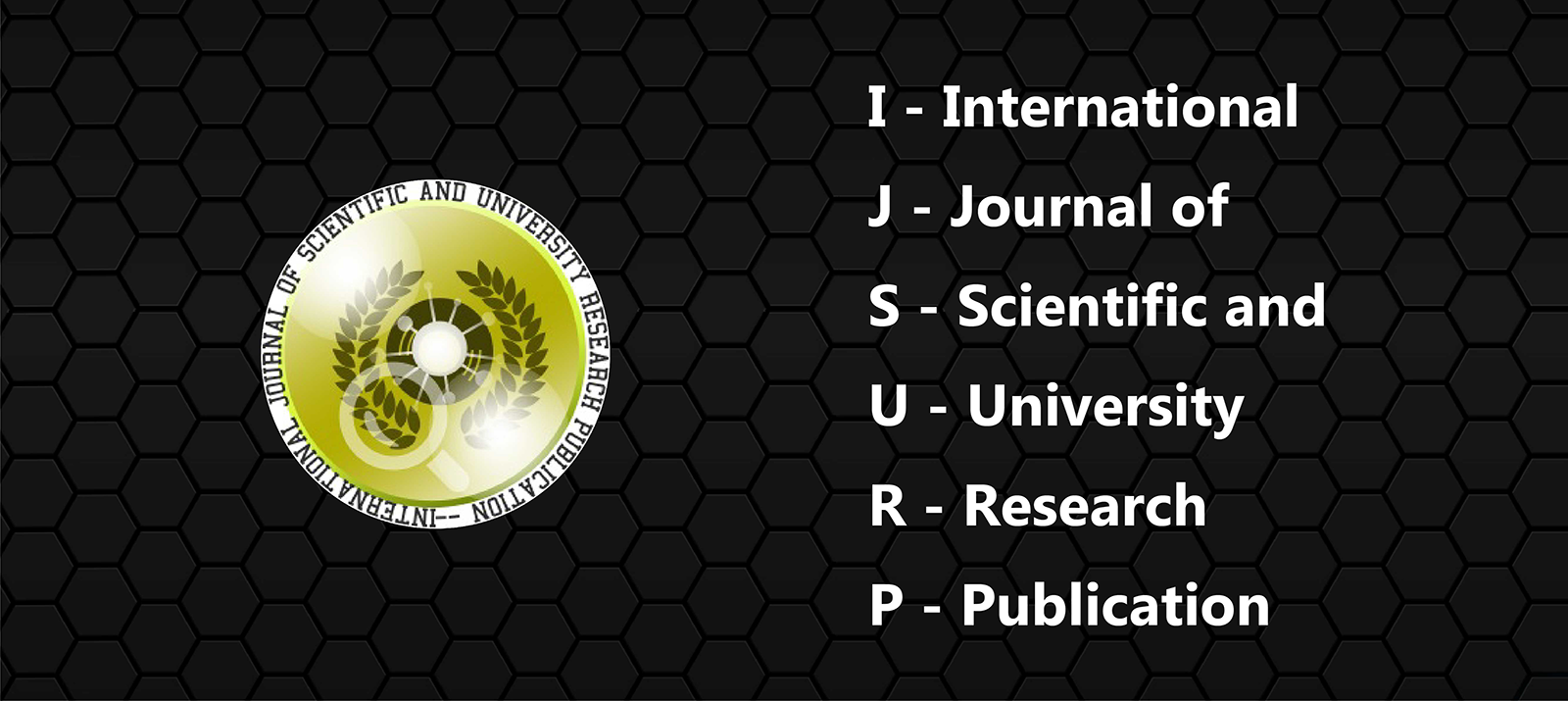
Diversity of Limnoplanktons in Two Fresh Water Lakes of Ethiopia
Authore(s) : Dr. B. SAI RAM PATTNAIK || Associate professorDept. of BiologyWolaita Sodo UniversityEthiopia
Volume : (3), Issue : 211, January - 2019

Abstract : Limnology as understood today as study of structural and functional relationships as well as productivity of organisms in inland aquatic ecosystem regulated by the dynamics of their physical, chemical and biotic communities.Study of ecosystem regulation is a perennial theme in ecology and from such studies we know that communities are influenced by a variety of physical, chemical and biological factors.An inland lake or pond is a “self conditional institution” or “closed community “enjoying considerable independence of the adjacent land mass. But due to rapid industrial and urban development some of the physiographical features of these fresh water bodies have under gone rapid changes causing much damage to the floral and faunal diversity. Study of Limnoplankton is of paramount importance since these serve as food for many larger organisms forming important link in the food cycle.Studies pertaining to systematic studies are getting low in recent periods. Rather much emphasis is now being given to specialized studies. The extinction of several species in aquatic environment is now an alarming omen in future to come. Present investigation is small attempt to understand the aquatic diversity of two of the rift valley Lakes of Ethiopia.
Keywords :Eutrophic, Limnology, Phyto- planktons , Zooplanktons
Article: Download PDF Journal DOI : 2364/2018
Cite This Article:
Diversity of Ethiopia
Vol.I (3), Issue.I 211
Article No : 10031
Number of Downloads : 100
References :
1. Bamtstedt, U., Gifford, D. J., Irigoien, , Atkinson, A. and Roman, M. (2000). Feeding. In: Zooplankton Methodology Manual, pp. 323–330, (Har- ris, R.P., Wiebe P.H., Lenz J., Skjoldal H. R. and Huntley M., eds). Academic Press, San Diego. | 2. Brook Lemma (2003). Ecological changes in two Ethiopian lakes caused by contrasting human intervention. Limnologica 33:44-53. | 3. Baxter R.M. (2002). Lake morphology and chemistry In: Ethiopian... More
- 1. Bamtstedt, U., Gifford, D. J., Irigoien, , Atkinson, A. and Roman, M. (2000). Feeding. In: Zooplankton Methodology Manual, pp. 323–330, (Har- ris, R.P., Wiebe P.H., Lenz J., Skjoldal H. R. and Huntley M., eds). Academic Press, San Diego. | 2. Brook Lemma (2003). Ecological changes in two Ethiopian lakes caused by contrasting human intervention. Limnologica 33:44-53. | 3. Baxter R.M. (2002). Lake morphology and chemistry In: Ethiopian rift valley lakes (Taylor W.D and Tudorancea C. eds) Backhuys publishers, Leiden. | 4. Carney, H.J. and Elser, J.J. (1990). Strength of zooplankton phytoplankton coupling in relation to lake trophic state. In: Large Lakes: Ecological Structures and Functions, pp. 615–631, (Tizler M.M. and Serruya C. eds). Springer Verlag, New York. | 5. Elias Dadebo (2000). Reproductive biology and feeding habbits of the cat fish Clarias gariepinus Burchel in Lake Hawasssa,Ethiopia.SINET: Ethiopian Journal of Science17:53-69. | 6. Gulati, R.D., Siewertser, K. and Postema, G. (1982). The zooplankton: its community structure, food and feeding, and role in the ecosystem of Lake Vetchen. Hydrobiologia 95:127–163. | 7. Girma Tilahun and Ahalgren, G.(2010): Sea- sonal variations in phytoplankton biomass and primary production in the Ethiopian rift valley lakes Ziway, Hawassa and Chamo-the basis for fish production. Limnologica 40:330-342. | 8.Girum Tamire, Seyoum Mengistou.(2013) Zooplankton community grazing rates in a small crater lake:Lake Kuriftu, Ethiopia. SINET: Ethiop. J. Sci.36 (1)1–8. | 9. Jaco- bus Vijverberg,et al., The composition of fish communities of nine Ethiopian lakes along a north-south gradient: threats and possible solutions: Animal Biology (2012) 10.1163 /157075611 X 618246 | 10. Pattnaik. B.S. R., “Zooplankton community and Trophic nature of Ponds” International Journal of Scientific Research, Vol 3, issue 4; 2014, page: 44-45.| | | 11. Pattnaik. B.S. R., “Species diversity of Lake Hawassa, Ethiopia”, International Journal of Scientific Research, Vol 3, issue 11; 2014, page: 33-35.| | | 12. Proceedings of EFASAVth Annual Conference, Hawassa University, Ethiopia-2013. | 13.Snell, T.W., 1998.Chemical ecology of rotifers, Hydribiolo 387/388:267-276. | 14. Seyoum Mengistou,(2006): Status and Challenges of Aquatic Invertebrate research in Ethiopia: A review; Ethio.J.Biol.Sci,(1):75-115,2006; ISSN:1819 8678. | 15. Welch, P.S., 1952. Limnology (II Edition). Mc. Graw Hill, New York: 538. |
- 16. Zinabu Gebremariam et al (2002). Long-term changes in chemical features of waters of seven Ethiopian rift valley lakes. Hydrobiolgia 477: 81-9. |
... Less
- 1. Bamtstedt, U., Gifford, D. J., Irigoien, , Atkinson, A. and Roman, M. (2000). Feeding. In: Zooplankton Methodology Manual, pp. 323–330, (Har- ris, R.P., Wiebe P.H., Lenz J., Skjoldal H. R. and Huntley M., eds). Academic Press, San Diego. | 2. Brook Lemma (2003). Ecological changes in two Ethiopian lakes caused by contrasting human intervention. Limnologica 33:44-53. | 3. Baxter R.M. (2002). Lake morphology and chemistry In: Ethiopian rift valley lakes (Taylor W.D and Tudorancea C. eds) Backhuys publishers, Leiden. | 4. Carney, H.J. and Elser, J.J. (1990). Strength of zooplankton phytoplankton coupling in relation to lake trophic state. In: Large Lakes: Ecological Structures and Functions, pp. 615–631, (Tizler M.M. and Serruya C. eds). Springer Verlag, New York. | 5. Elias Dadebo (2000). Reproductive biology and feeding habbits of the cat fish Clarias gariepinus Burchel in Lake Hawasssa,Ethiopia.SINET: Ethiopian Journal of Science17:53-69. | 6. Gulati, R.D., Siewertser, K. and Postema, G. (1982). The zooplankton: its community structure, food and feeding, and role in the ecosystem of Lake Vetchen. Hydrobiologia 95:127–163. | 7. Girma Tilahun and Ahalgren, G.(2010): Sea- sonal variations in phytoplankton biomass and primary production in the Ethiopian rift valley lakes Ziway, Hawassa and Chamo-the basis for fish production. Limnologica 40:330-342. | 8.Girum Tamire, Seyoum Mengistou.(2013) Zooplankton community grazing rates in a small crater lake:Lake Kuriftu, Ethiopia. SINET: Ethiop. J. Sci.36 (1)1–8. | 9. Jaco- bus Vijverberg,et al., The composition of fish communities of nine Ethiopian lakes along a north-south gradient: threats and possible solutions: Animal Biology (2012) 10.1163 /157075611 X 618246 | 10. Pattnaik. B.S. R., “Zooplankton community and Trophic nature of Ponds” International Journal of Scientific Research, Vol 3, issue 4; 2014, page: 44-45.| | | 11. Pattnaik. B.S. R., “Species diversity of Lake Hawassa, Ethiopia”, International Journal of Scientific Research, Vol 3, issue 11; 2014, page: 33-35.| | | 12. Proceedings of EFASAVth Annual Conference, Hawassa University, Ethiopia-2013. | 13.Snell, T.W., 1998.Chemical ecology of rotifers, Hydribiolo 387/388:267-276. | 14. Seyoum Mengistou,(2006): Status and Challenges of Aquatic Invertebrate research in Ethiopia: A review; Ethio.J.Biol.Sci,(1):75-115,2006; ISSN:1819 8678. | 15. Welch, P.S., 1952. Limnology (II Edition). Mc. Graw Hill, New York: 538. |
- 16. Zinabu Gebremariam et al (2002). Long-term changes in chemical features of waters of seven Ethiopian rift valley lakes. Hydrobiolgia 477: 81-9. |






